Chops: Beginner
Theory: Beginner
Lesson Overview:
• Create more interesting chord progressions.
• Learn how to use extensions.
• Add more interest to chords through the use of inversions and substitutions.
Click here to download MP3s and a printable PDF of this lesson’s notation.
As a songwriter, I like to start simple and build from there. Some of my favorite songs to play (including many of my own) only have a few chords. These techniques will help to make things more compelling without over-complicating the basic framework of the piece. Having said that, it’s fine to geek out and compose music that isn’t simple! There is plenty of room for simple, complex, and everything in between. I’m always looking for ways to keep it interesting and increase my options while enriching my harmonic landscape.
Let’s take a simple and common set of chord changes like the VIm–IV–I–V progression. In the key of G major those basic chords are E minor, C, G, and D. These are the same chord changes (in a different key) that I use in my song “Beautiful Pain,” as you can see in Fig. 1. Nothing too groundbreaking here, but let’s look at five different ways to make them more interesting.
1. Extensions<
When you see a chord like E7#11b13, do your eyes cross? Have no fear, it’s really not as complicated as it looks (or sounds). First, you have the root—in this case, E—and then you have the quality (major, minor, dominant, etc.). So far, so good. Now is where most people get lost. The numbers after the quality (#11, b13) indicate the extensions and alterations. These are non-diatonic notes that can add color, depth, and sophistication to a chord. They also open up more opportunities for voice-leading and finding common tones between chords. For example, if we take the vanilla C chord shown in Fig. 1 and add a D, we now have a Cadd9 chord. Simple, right?
Now, let’s look at the first chord in the progression, a basic Em shape. Let’s start by changing the first chord from Em to Em7 (E–G–B–D). Now, the 7 isn’t normally considered an extension, but it does create a common tone (D) between the first two chords. Because both the G and D major chords also contain the common tone, it can smooth out the transition between chord changes while creating layers of harmony (Fig. 2).
If you want to get even more colorful you can do something like Fig. 3. For example, by making the Em7 into an Em9 (E–G–F#–B), the C into a Cadd9#11 (C–E–G–D–F#), the G into a Gmaj7 (G–B–D–F#), and the D into a Dadd9 (D–F#–A–E)–you can really take it out there.
2. Suspensions
You can suspend the tonality of a chord by replacing the 3 with either the 2 or 4. This creates a gentle, almost ethereal dissonance that can really bring some flavor to your changes. For example, by making the D into a Dsus4 (D–G–A), you now have a common tone—G (Fig. 4). This is another subtle way to enhance your changes. Although similar to the effect of a chord extension, I think you’ll find that the differences make understanding both approaches more than worthwhile.
3. Inversions
By rearranging the order of notes, you can bring out different sides (I think of them as personalities) of a chord. When you have a song that consists of the same three or four chords over and over again, you’ll want to keep it interesting, and this is a great way to do it. Let’s make the D chord into a first-inversion shape (otherwise known as a D/F# or D with an F# in the bass). In this context, you can really alter the personality of that chord and therefore the entire set of changes (Fig. 5). This is an idea I really think about when composing my own songs.
4. Voicings
There are several different places on the neck where you can “voice” the same chord. The transformation in this case is almost mystical because you are playing roughly the same notes, but when it’s in a different position on the neck they can sound quite different. For example, by playing Em9 with the root on the 7th fret of the 5th string, you can increase the cool factor while breaking yourself out of the open position box (Fig. 6).
5. Substitutions
You can also substitute a chord for another chord that shares one or more common tones. Check this out: Try substituting an Am7 (A–C–E–G) for the C chord. You can really create a departure from the repetitive (Fig. 7). As you can see, both chords contain the notes C, E, and G. I use this technique more when I’m composing because the change is more pronounced.
 Keaton Simons
Keaton SimonsBluesy singer/songwriter Keaton Simons is truly what the Los Angeles Times terms “a triple threat.” He captivates audiences with an authentic voice, compelling and soul-baring songs, and a command of both acoustic and electric guitars in every genre. Keaton’s new album Beautiful Pain is out now on Best Revenge Records. For more information, visit keatonsimons.com.


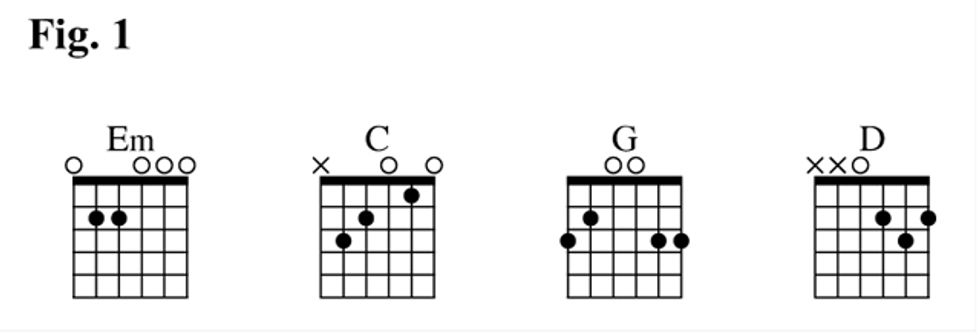
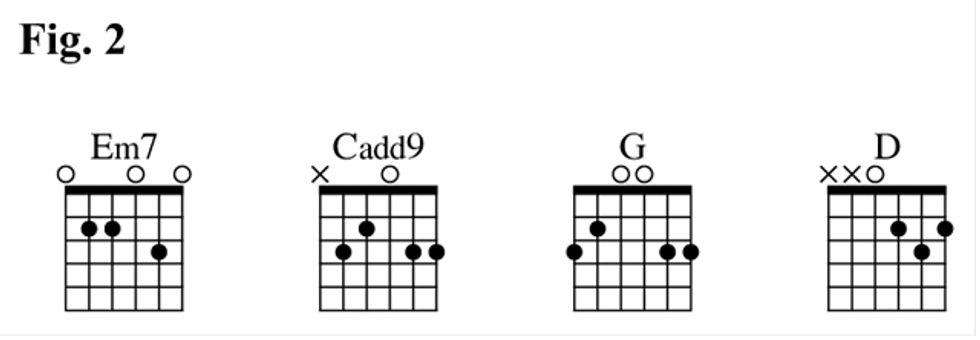
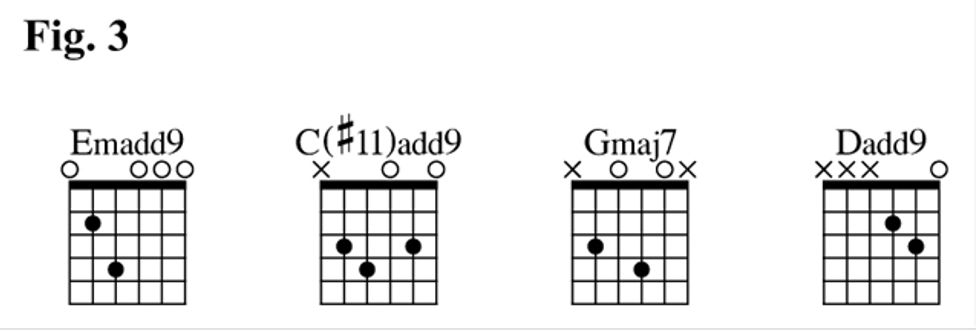
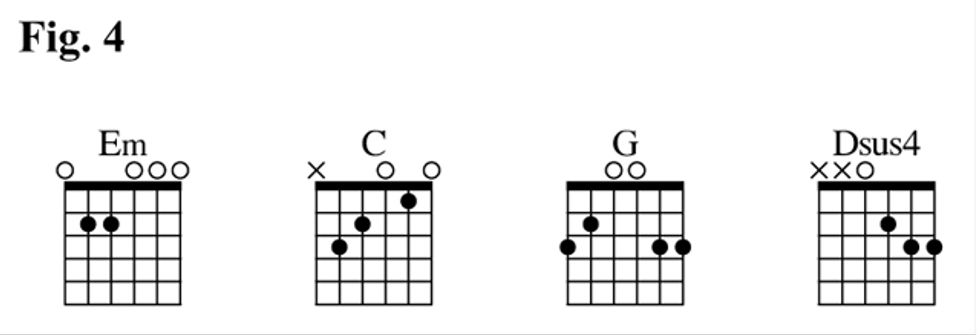
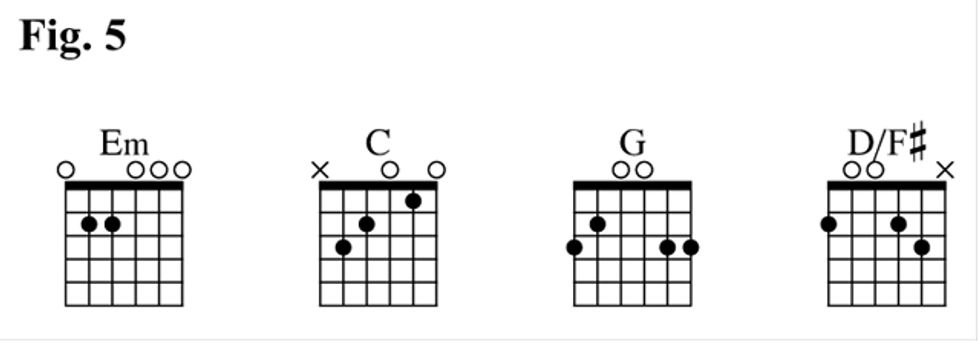
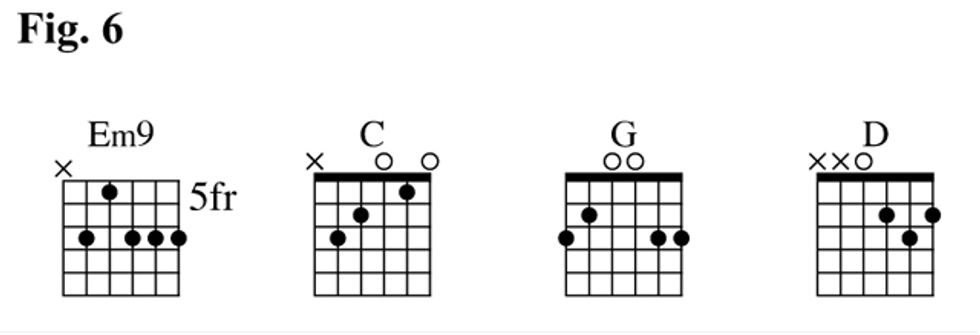
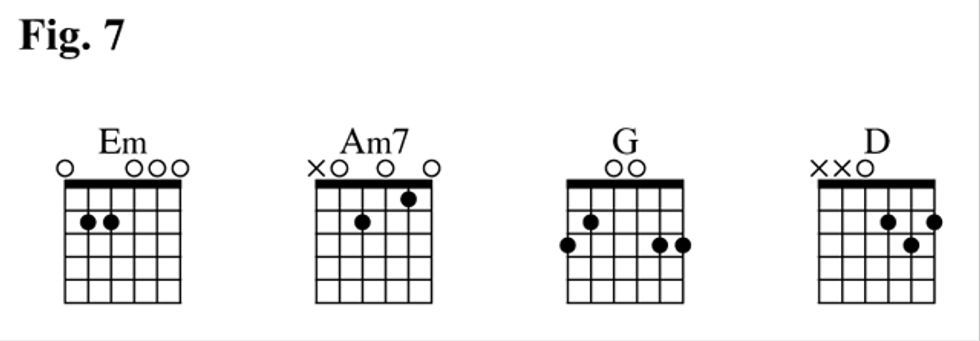








![Rig Rundown: Russian Circles’ Mike Sullivan [2025]](https://www.premierguitar.com/media-library/youtube.jpg?id=62303631&width=1245&height=700&quality=70&coordinates=0%2C0%2C0%2C0)














